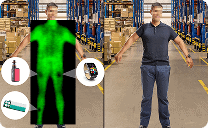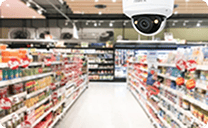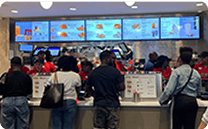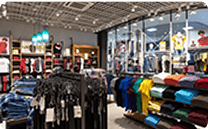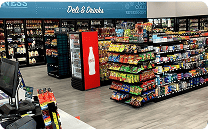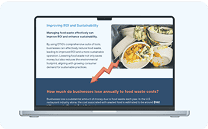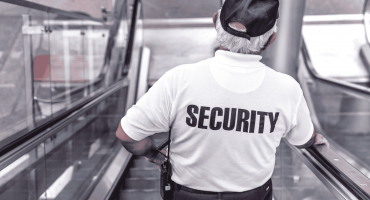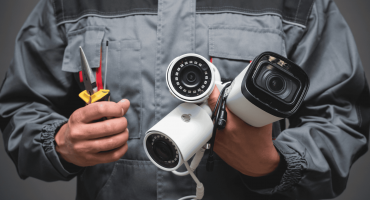In This article
You’re aware that the quick-service restaurant (QSR) industry is no walk in the park. A slew of new and emerging developments, technology, and customer behavior is shaking up the QSR market, presenting unprecedented challenges and transforming the QSR experience.
Speed of Service and Customer Experience
Today’s customers increasingly expect seamless, personalized experiences, which have transformed the QSR customer experience. Emerging developments reshaping the experience include Mobile Ordering, self-service kiosks, ghost kitchens, and partnerships with third-party delivery services like Grubhub, Uber Eats, and DoorDash. Simultaneously, restaurants must tackle rising labor costs, employee retention challenges, and growing competition from fast-casual dining alternatives.
Among various factors influencing speed and customer experience in QSRs, speed of service stands out significantly. Faster, efficient service impacts customer behavior in QSRs, fostering repeat visits and enhancing customer loyalty.
In addition, customer expectations are higher than ever. Your patrons demand quality food and fast, seamless service. When your customers can explore multiple dining options with just a few clicks or swipes, you must make your QSR stand out, not just with the food you serve but with the entire dining experience. Among the most critical factors that affect that experience? Speed of service.
Optimizing the speed of service for your QSR does much more than simply improving how fast a customer gets their order. Service speed directly influences customer satisfaction, brand loyalty, and operational efficiency. This post explores why speed of service matters, highlights some common bottlenecks, and offers specific recommendations to help you enhance service speed and the customer experience for your QSR.
Why Speed of Service Matters
Service Speed and customer experience in QSRs are inextricably linked. In the QSR world, speed isn’t just a convenience. It’s a necessity. Customers often choose quick-service restaurants because they’re short on time, whether grabbing a bite during a lunch break or picking up dinner on the go. Delays can quickly lead to customer frustration, damage to your QSR’s reputation, and lost business.
Service Speed, Customer Retention, and Brand Reputation
Prompt service can make a strong first impression and encourage repeat visits. Swift, efficient service also reinforces your brand’s reliability and builds trust. On the other hand, studies consistently find that customers who experience long wait times are significantly less likely to return, regardless of food quality.
Balancing Speed and Quality
Speed is essential, but faster service should never compromise quality. A rushed order that’s inaccurate or poorly prepared can do more harm than a slight delay. Your goal is to find and focus on that sweet spot where consistently fast service and consistently high-quality meet.
Identifying Bottlenecks to Improve Service Speed
A critical first step in improving your speed of service is to pinpoint what’s slowing things down. Here are some common challenges that keep QSRs from serving customers quickly.
- Inefficient Workflows: Disorganized kitchens, poorly designed prep stations, and unclear staff responsibilities can all slow down operations.
- Inadequate Staffing: Too few employees during peak hours can create backlogs at every touchpoint of each customer’s visit, from ordering to fulfillment. Employees who lack adequate, current training can also slow and degrade your customers’ experiences.
- Outdated Technology: Reliance on older legacy systems or manual processes can limit service speed and create communication gaps due to lack of visibility and data.
How to Identify Service Delays
As you embark on the journey to enhance service speed at your QSR, understanding the impact of your efforts is crucial. Customer feedback and input through in-person or online interviews, reviews, and surveys can provide invaluable insights into service delays and their effects on customer perceptions. Regular analysis of order fulfillment times, staff movements, queue lengths, and other operational data can uncover hidden inefficiencies.
You should also ensure that the results of these efforts are shared regularly with staffers and managers. Doing so can help to foster collaboration on service speed improvement, guide staff performance efforts, and increase organizational transparency.
Strategies for Improving Service Speed
Once you’ve identified the bottlenecks in service speed at your QSR, you can leverage a range of strategies to enhance speed without compromising quality. Technology integration, in particular, offers promising solutions.
1. Technology Integration
- Digital Kiosks: Self-service kiosks allow customers to place and personalize their orders quickly and accurately, freeing up staff for food prep and reducing line wait times. To maximize their value, ensure that one trained employee is always available to help kiosk users with problems.
- Mobile Ordering and QSR Experience: Apps and mobile-friendly websites enable customers to order ahead, reducing congestion during peak hours. You must ensure staff are ready and able to fulfill mobile orders without disrupting in-store customer orders and interactions.
- Automation: Automation options abound, from kitchen display systems (KDSs) to “smart” fryers. These and other tools can help streamline food preparation and ensure consistency. Training and seamless integration with your QSR environment will help you get the most out of any automated solutions you implement.
- Loss Prevention Technology: Software, systems, and services that can integrate with POS systems feed operators more data and visibility for improving their operations.
2. Employee Training
- Efficient Onboarding: Effective, consistently updated staff training on operational requirements, relevant tools and systems, and customer service goals can ensure smoother, more consistent operations and service speeds.
- Standardized Procedures: Creating, documenting, sharing, and enforcing clear standard operating procedures (SOPs) can reduce errors and accelerate service speeds.
- Cross-Training: Staffers who can fulfill multiple roles can help balance workloads and sustain high service speeds during busy periods.
3. Queue Management
- Smart Scheduling: Aligning staff schedules with accurate demand forecasts helps to ensure adequate coverage and consistent service delivery speeds during rushes.
- Self-Service Options: Drive-throughs with digital menus, curbside pickup, and walk-up windows provide customers with more service choices and can reduce in-store bottlenecks.
- Clear Signage and Line Management: Signs and other displays can improve line navigation, minimize customer confusion, and shorten perceived wait times.
Optimizing Service Time with Process Improvements
Technologies and training can enable significant short-term service speed improvements. To sustain and build upon those improvements, you need to evaluate and refine your business’s operational workflows. Beyond technology and training, operational workflows must be evaluated and improved for sustained speed gains. Here are some techniques that can help.
- Lean Management Techniques: Lean management focuses on five areas: defining value, mapping the value stream, creating flow, establishing a pull system, and pursuing perfection through continuous improvement. Borrowed from manufacturing, lean principles help eliminate unnecessary steps and reduce food prep and delivery waste. Applying lean principles can help eliminate waste and streamline processes, leading to faster service. For instance, in a QSR, lean management can be applied to streamline the order preparation process, reducing wait times for customers.
- Workflow Redesign: Rearranging kitchen layouts or reassigning tasks can minimize motion and streamline service. For example, in a QSR, reorganizing the kitchen to place frequently used ingredients and tools closer to the cooking stations can reduce the time it takes to prepare orders, thereby improving service speed.
- Improved Team Communication: Technologies like headsets and mobile task management apps can enhance coordination between front- and back-of-house teams. Enhanced communication tools streamline team coordination, positively influencing the QSR management experience.
Rapid Service Strategies for Different Sectors
While these strategies are tailored to QSRs, similar principles can be applied across various industries that depend on fast service:
Retail
- Self-Checkouts: Allow customers to complete purchases quickly and reduce cashier workload.
- Automated Inventory Tracking: Ensures products are always in stock and reduces manual restocking time.
- AI-Driven Assistance: Chatbots and smart kiosks offer instant answers to customer queries.
Food & Beverage, QSRs, and Convenience Stores
- Pre-Ordering Systems: Customers can order before arrival, shortening wait times dramatically.
- Drive-Thru Optimizations: Multiple lanes, order confirmation screens, and designated pickup points keep traffic flowing.
- Real-Time Order Tracking: Keeps customers informed and reduces perceived wait time.
Measuring Success and Continuous Improvement
To ensure continued success with your service speed improvement initiatives, you must track your progress and modify your efforts as needed. Key performance indicators (KPIs) are core elements of these important tasks. Examples include the following.
- Service Time: Measure average wait and fulfillment times.
- Customer Feedback: Employ customer feedback tools for QSRs for continuous insights. Monitor ratings, reviews, and satisfaction scores.
- Operational Efficiency: Track order accuracy, labor productivity, and throughput metrics.
Performance Audits and Reviews
Performance audits with real-time dashboards quickly identify and resolve bottlenecks. Encouraging staff engagement in continuous improvement efforts significantly enhances the overall QSR customer experience.
With KPIs in place, you should review and audit compliance with them regularly. Regular audits can uncover areas that need refinement. Weekly or monthly performance reports help teams stay accountable and recognize trends before they become issues.
Modern technologies can speed up audits and leverage audit data more productively. For example, tools that enable real-time dashboards and automated reports can help managers quickly identify bottlenecks and address them before they affect QSR customer experiences and satisfaction.
Culture of Continuous Improvement
Encourage staff to contribute ideas for improving service efficiency. Recognize and reward staffers who consistently meet or exceed service benchmarks or propose beneficial innovations. Encourage them to share tips for success with their colleagues. These and other steps can foster a culture where everyone is invested in improving the customer experience.
Conclusion
In the QSR world and beyond, speed of service is more than a competitive advantage. It’s a cornerstone of customer satisfaction. By identifying bottlenecks, leveraging technology, training staff effectively, and optimizing operational workflows, the QSR customer experience can be improved by delivering faster, more reliable service without compromising quality. A data-driven approach to monitoring performance and embracing innovation enhances the customer experience and drives stronger relationships, repeat business, and higher revenue.
In short, when you serve faster, you serve better. Follow the link to learn more about QSR solutions that enhance the QSR customer experience.
meta description for WP
Explore strategies to enhance speed and customer experience in quick-service restaurants using technology, staff training, and workflow optimization.
